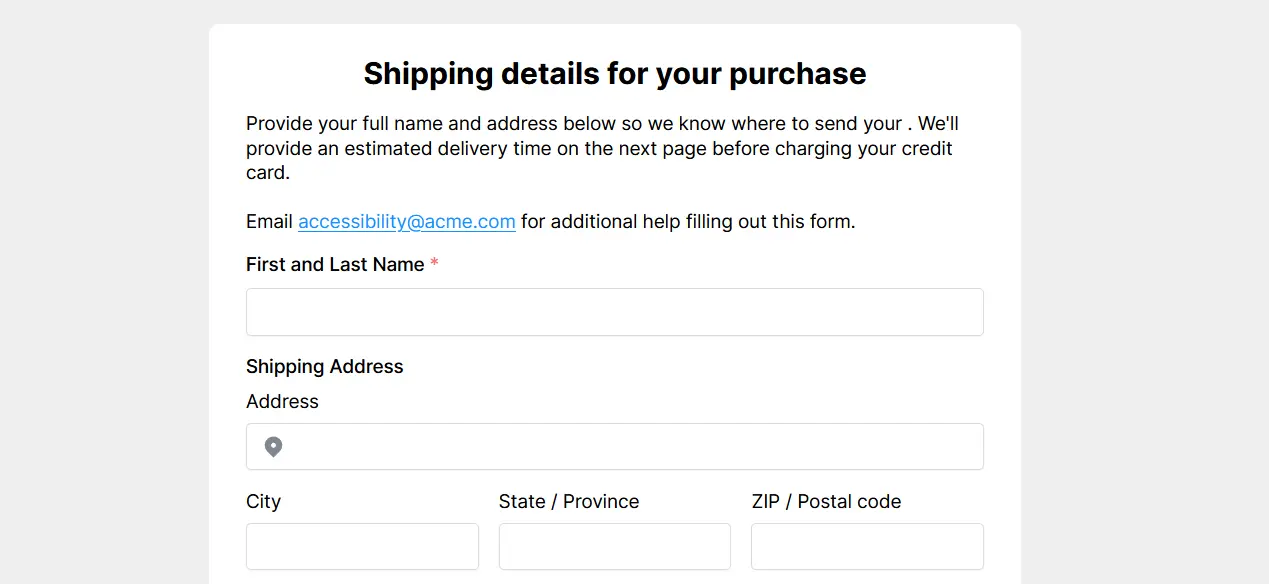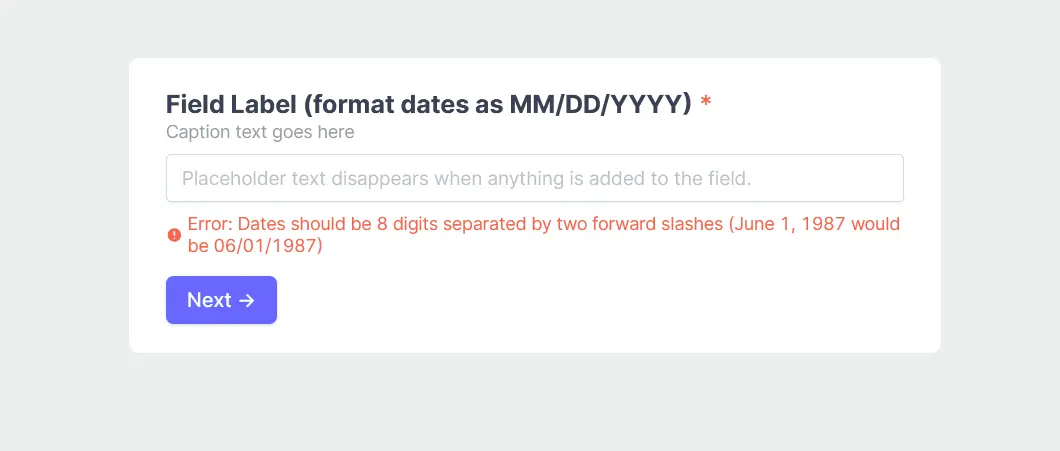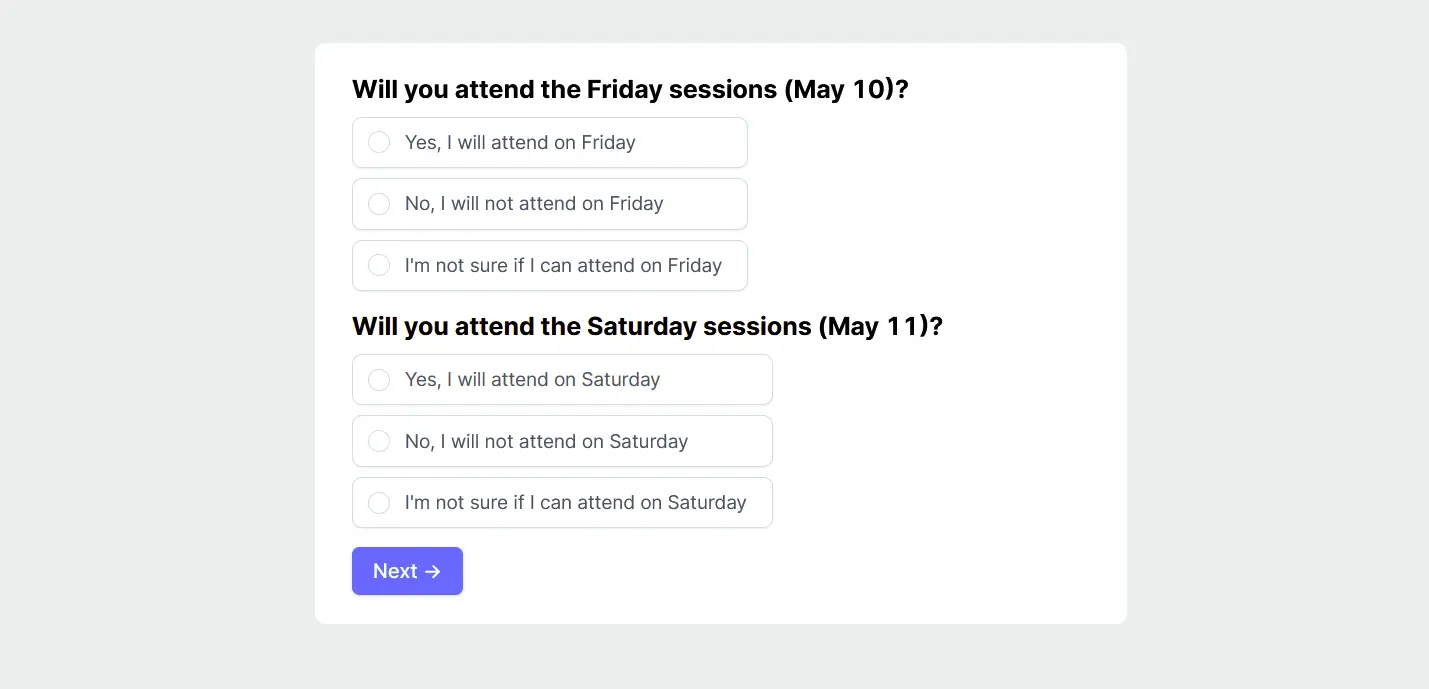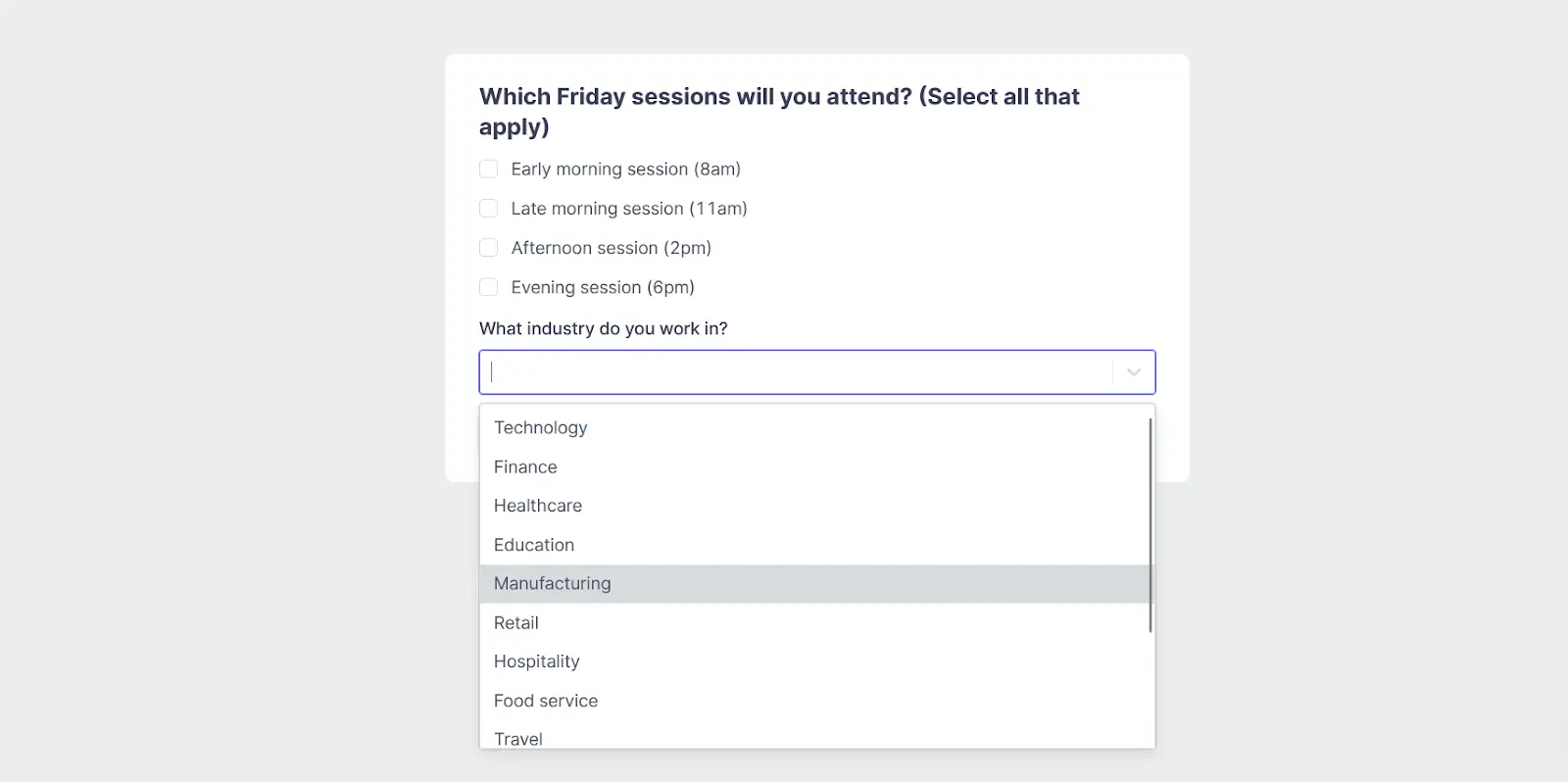Overview
Accessible form design covers a wide range of language, design, and technical choices. Although the Fillout team continues to incorporate accessibility best practices into our default settings, some accessibility improvements can only be implemented by you.Getting started with accessibility optimization
People with visual, auditory, and cognitive accessibility needs assistive technologies, such as screen readers, screen magnifiers, and keyboard-only navigation to interact with websites and web applications. Many accessibility optimizations are fairly technical, involving how a page’s underlying HTML is structured and written. Fillout takes care of many of those improvements for you. All our forms should be navigable by keyboard only (although there are some keyboard shortcuts specific to certain screen readers that we are still working on), and ARIA labels should be automatically applied to all form elements by default. However, how you arrange and configure form fields and media on the page can significantly impact accessibility. The accessibility recommendations below are those that we have found to be the most important and easiest to implement when building forms.Improve form accessibility with design and layout settings
Only use multi-column form layouts when all fields in a single row are closely related to each other (e.g., city/state/zip or day/month/year). When fields with weaker associations are placed next to each other, users (and sometimes screen readers) move from field to field in the incorrect order (e.g., moving from left to right or down one column and back to the top of the next). Another important structural change is to opt for multi-page forms that group questions by category. Minimizing the number of questions on each page drastically simplifies navigation for screen reader and keyboard-only users. It also creates opportunities to further streamline your form by incorporating page logic that skips unnecessary pages based on responses.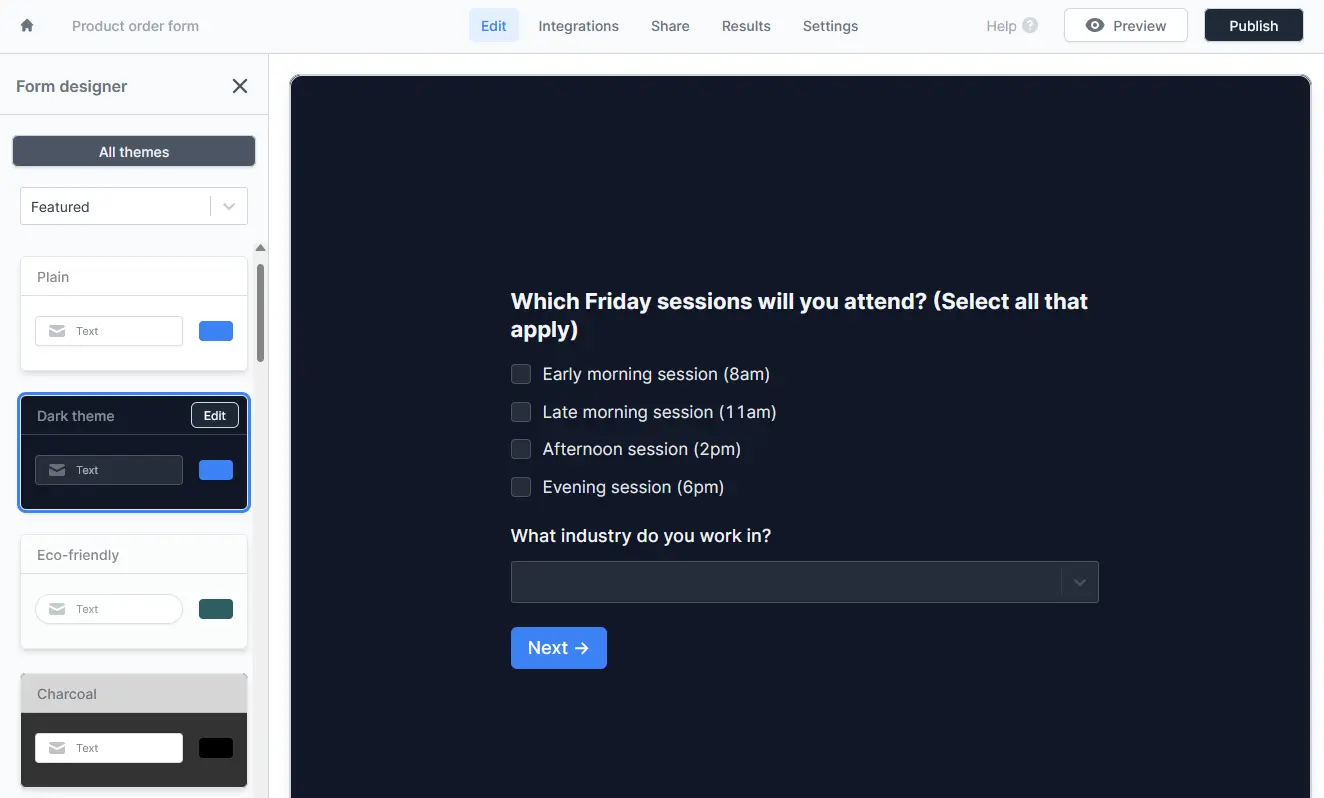

How to write more accessible form questions and instructions
